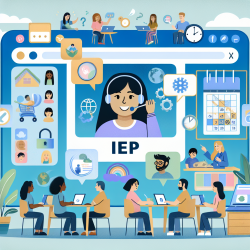Introduction
Children's Independent Mobility (CIM) refers to the freedom children have to explore their neighborhoods without adult supervision. This concept is crucial for fostering physical activity, self-confidence, and cognitive development. However, recent studies indicate a generational decline in CIM, particularly in Western countries. Understanding family dynamics and societal influences is essential for reversing this trend and promoting healthier, more independent children.
Key Findings from Recent Research
A study titled “Well, You Feel More Responsible When You’re Unsupervised”: Exploring Family Perspectives on Children’s Independent Mobility provides valuable insights into the factors influencing CIM. The research identified four key preconditions that facilitate CIM:
- Parents' Childhood Experiences: Parents' memories of their own independent mobility during childhood significantly influence their willingness to allow their children similar freedoms.
- Children's Individual Characteristics: A child's confidence, maturity, and ability to navigate their environment safely are critical factors in determining their level of independent mobility.
- Family Communication: Open communication within the family, including discussions about safety and boundaries, is essential for negotiating CIM.
- Social Environment Perceptions: Positive perceptions of the neighborhood, including safety and community cohesion, support greater levels of CIM.
Implications for Practitioners
For practitioners in speech language pathology and related fields, these findings underscore the importance of considering family dynamics and environmental factors when developing interventions. Encouraging parents to reflect on their childhood experiences and fostering open communication within families can enhance children's independent mobility.
Practitioners can also advocate for community programs that build neighborhood connections and promote safe environments for children. These initiatives can create supportive contexts for CIM, ultimately benefiting children's physical and cognitive development.
Encouraging Further Research
While the study provides valuable insights, further research is needed to explore the nuances of CIM across different demographics and settings. Practitioners are encouraged to engage in research that examines the impact of cultural, socioeconomic, and environmental factors on CIM. Such research can inform the development of tailored interventions that address the unique needs of diverse communities.
Conclusion
Children's independent mobility is a vital component of their development, offering numerous benefits that extend beyond physical health. By understanding and addressing the factors that influence CIM, practitioners can play a crucial role in promoting healthier, more independent children. To read the original research paper, please follow this link: “Well, You Feel More Responsible When You’re Unsupervised”: Exploring Family Perspectives on Children’s Independent Mobility.










